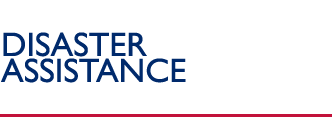USG Partners in Providing Humanitarian Assistance
As the chief USG responder to international disasters and crises, the Office of U.S. Foreign Disaster Assistance (OFDA) coordinates assistance with offices within
USAID and other USG agencies. OFDA also collaborates with and/or funds other humanitarian and development
organizations.
OFDA is one of nine offices within USAID’s Bureau for Democracy, Conflict, and Humanitarian Assistance (DCHA).
In response to large-scale disasters, OFDA works closely with the Office of Food for Peace (FFP), the Office of
Transition Initiatives (OTI), and the Office of Conflict Management and Mitigation (CMM) to meet the needs of affected
populations and establish the groundwork for longer-term recovery and reconstruction.
FFP provides food commodities to implementing partners to address emergency food needs and to support food security activities.
OTI’s assistance is designed to facilitate the transition from crisis and conflict to peace and stability by aiding in the demobilization
of combatants or developing democratic governance and media structures within the affected country. CMM supports early responses to
address the causes and consequences of instability and conflict and works to integrate conflict mitigation and management into USAID’s programs.
Other parts of USAID, such as regional bureaus, support longer-term development programs that complement DCHA’s activities.
OFDA also coordinates with other USG agencies that provide significant humanitarian assistance to populations
affected by disasters. The U.S. Department of Defense (DOD) possesses unique capabilities that are able to overcome
the serious logistical challenges that often occur following disasters. In collaboration with OFDA, DOD coordinates
and directs the utilization of military assets, including personnel, supplies, and equipment, for humanitarian
assistance overseas. Established in 2005, USAID’s Office of Military Affairs (OMA) is the focal point for USAID
interaction with DOD. OMA is responsible for enabling effective working relationships with DOD, including maintaining
emergency response readiness, coordinating planning, and developing joint training, education, and exercises. OMA
also serves as a liaison between DOD and the humanitarian community during a disaster response.
The U.S. Department of State’s Bureau of Population, Refugees, and Migration (State/PRM) and Office of the Coordinator
for Reconstruction and Stabilization (State/CRS) also provide humanitarian assistance to people in need.
State/PRM provides multilateral grants to international relief organizations in response to refugee and other
emergency appeals and contributes to the regular program budgets of organizations such as the Office of the U.N.
High Commissioner for Refugees (UNHCR) and the International Committee of the Red Cross (ICRC). State/CRS works
to lead, coordinate, and institutionalize USG civilian capacity to prevent or prepare for post-conflict situations,
and to help stabilize and reconstruct societies in transition from conflict or civil strife.
The U.S. Department of Agriculture (USDA) provides food assistance to support emergency feeding programs in countries
experiencing food shortages due to drought and civil conflict. The U.S. Geological Survey (USGS), the U.S. Department
of Health and Human Services’ (DHHS) Centers for Disease Control and Prevention (CDC), USDA’s Forest Service (FS), the
National Oceanic and Atmospheric Administration (NOAA), and the Environmental Protection Agency (EPA) are examples of
other agencies that provide technical assistance, in coordination with OFDA, in response to disasters and potential
hazards overseas.

|
OFDA also collaborates with a number of other organizations to monitor and respond to humanitarian situations worldwide.
The USAID-funded Assistance for Emergency Locust/Grasshopper Abatement (AELGA) helps countries to prevent and respond to plagues.
The USAID-funded Famine Early Warning Systems Network (FEWS NET) strengthens the ability of countries and regional organizations
to manage the risk of food insecurity through the provision of timely and analytical early warning and vulnerability information. When
appropriate, OFDA deploys Urban Search and Rescue (USAR) teams from the Fairfax County Fire and Rescue Department and the Los Angeles
County Fire Department to affected areas.
OFDA maintains communication with U.N. agencies and other international organizations and donors to ensure the USG complements rather
than duplicates existing assistance programs. OFDA provides a significant portion of the budget for the U.N. Office for the Coordination of
Humanitarian Affairs (OCHA), which collects and disseminates critical information on humanitarian needs throughout the world. OFDA also coordinates
with InterAction, the largest group of U.S.-based international development and humanitarian non-governmental organizations.
Back to Top ^
|


